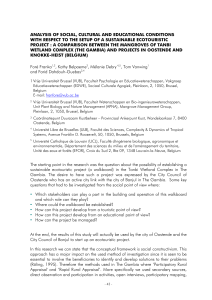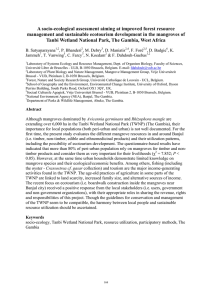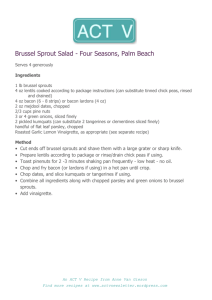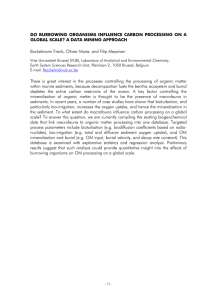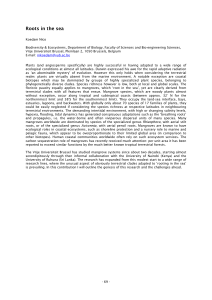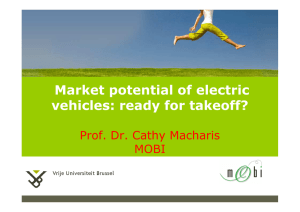Debry Mélanie , Franka Foré , Christine Farcy
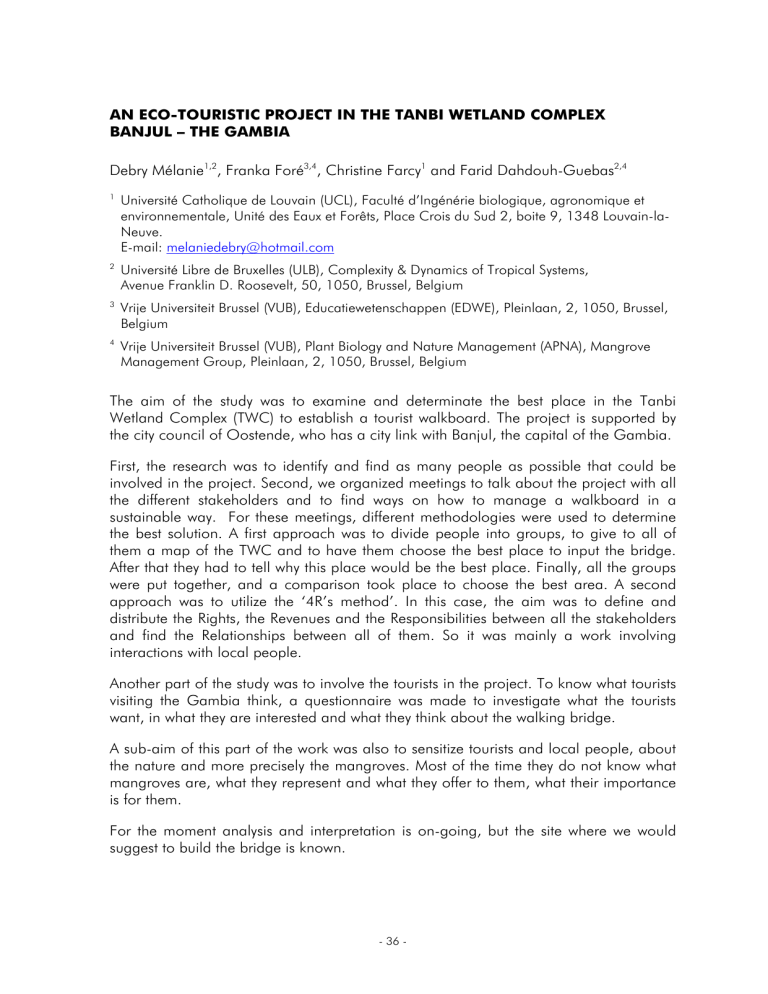
AN ECO-TOURISTIC PROJECT IN THE TANBI WETLAND COMPLEX
BANJUL – THE GAMBIA
Debry Mélanie 1,2 , Franka Foré 3,4 , Christine Farcy 1 and Farid Dahdouh-Guebas 2,4
1 Université Catholique de Louvain (UCL), Faculté d’Ingénérie biologique, agronomique et environnementale, Unité des Eaux et Forêts, Place Crois du Sud 2, boite 9, 1348 Louvain-la-
Neuve.
E-mail: melaniedebry@hotmail.com
2 Université Libre de Bruxelles (ULB), Complexity & Dynamics of Tropical Systems,
Avenue Franklin D. Roosevelt, 50, 1050, Brussel, Belgium
3 Vrije Universiteit Brussel (VUB), Educatiewetenschappen (EDWE), Pleinlaan, 2, 1050, Brussel,
Belgium
4 Vrije Universiteit Brussel (VUB), Plant Biology and Nature Management (APNA), Mangrove
Management Group, Pleinlaan, 2, 1050, Brussel, Belgium
The aim of the study was to examine and determinate the best place in the Tanbi
Wetland Complex (TWC) to establish a tourist walkboard. The project is supported by the city council of Oostende, who has a city link with Banjul, the capital of the Gambia.
First, the research was to identify and find as many people as possible that could be involved in the project. Second, we organized meetings to talk about the project with all the different stakeholders and to find ways on how to manage a walkboard in a sustainable way. For these meetings, different methodologies were used to determine the best solution. A first approach was to divide people into groups, to give to all of them a map of the TWC and to have them choose the best place to input the bridge.
After that they had to tell why this place would be the best place. Finally, all the groups were put together, and a comparison took place to choose the best area. A second approach was to utilize the ‘4R’s method’. In this case, the aim was to define and distribute the Rights, the Revenues and the Responsibilities between all the stakeholders and find the Relationships between all of them. So it was mainly a work involving interactions with local people.
Another part of the study was to involve the tourists in the project. To know what tourists visiting the Gambia think, a questionnaire was made to investigate what the tourists want, in what they are interested and what they think about the walking bridge.
A sub-aim of this part of the work was also to sensitize tourists and local people, about the nature and more precisely the mangroves. Most of the time they do not know what mangroves are, what they represent and what they offer to them, what their importance is for them.
For the moment analysis and interpretation is on-going, but the site where we would suggest to build the bridge is known.
- 36 -
